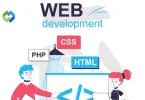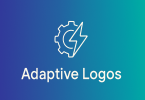
Conversion is another well-liked capability that it may offer website designers on various platforms. All you have to do to create the most responsive and user-friendly website you can ever produce as a web designer is convert any Photoshop files you require for your own Bootstrap compatible website into a suitable file.
However, before we proceed further with our PSD to Bootstrap Benefits, let’s have a look at what Bootstrap is and what its features are.
Table of Contents
Table of Contents
Why Use Bootstrap?
One of the most widely used front-end development frameworks for creating responsive websites and applications is called Bootstrap. Using Bootstrap to create websites and applications is fantastic. Bootstrap is one of the greatest front-end development frameworks because of its extensive feature set, community support, and documentation. You won’t quit using Bootstrap once you get started.
Features of PSD to Bootstrap Conversion
- Development using Bootstrap is FASTIt’s responsiveIt is completely adjustable.
- Bootstrap has multiple JavaScript elements
- Built to function optimally in the newest desktop and mobile browsers, Bootstrap
- The time and expense of development are significantly reduced when a responsive design is created
- SEO-friendly and easier to maintain
- Bootstrap comes with one of the best, responsive, and mobile-first grid systems
- It’s flexible and easy to use
- It helps in scaling your single website design from the smallest mobile device to high-definition displays
Here are the top 3 out of dozens of advantages of getting PSD to Bootstrap Conversion for your website:
1. More Web Traffic
One can also greatly boost the amount of web traffic to their website by using Bootstrap conversion, as it provides users with responsive and ideal web design features. You can convert your files into Bootstrap-compatible elements, so you won’t experience any issues with the website’s user interface’s speed or navigation.
Better audience involvement will follow, and this will undoubtedly increase website traffic in the future.
2. Improved Usability and Functionality
As previously mentioned, Bootstrap is renowned for producing responsive site elements that could improve the functionality and vitality of webpages. You can significantly increase the website UI’s capabilities by utilizing this open source toolkit.
For instance, Bootstrap can quickly convert your PSD file to produce brighter renderings in terms of colors and motions if you want your widgets to be more animated. To put it briefly, it might make the website even more engaging than it was.
3. Overall Consistency
Additionally, compatibility and functional consistency across all browsers can be provided using the conversion capability. Using Bootstrap will ensure that web designers and developers, regardless of experience level, have no trouble with their page rendering in a variety of web browsers.
This also applies to every other online client. In addition to being compatible with browsers, Bootstrap is also compatible with all other online and mobile platforms. You won’t experience any performance problems at all if you create your website with this toolkit.
Pros and Cons
The selection of the framework is a significant dilemma. If you are not familiar with the code, you must learn how to use it in order to implement your option. This results in an extension of the project’s timetable. Reducing the quantity of code on a page is the most popular application of the frameworks.
However, they could complicate your project if you are not familiar with the syntax or how the framework works inside an application. To examine the other side of the coin, there are numerous frameworks available on the market. Studying each one and then applying it to the design process is therefore difficult.
Naturally, using a framework reduces the amount of code needed for a website. Coding time will decrease simultaneously if you use them correctly. When used successfully, frameworks have the potential to increase productivity, which will proactively enhance the design.
The fact that you can’t always rely on receiving the best code is the worst part. Strong community support is required for the framework to continue assisting you.
How Much Does It Cost for PSD to Bootstrap Conversion?
The cost of converting PSD to HTML is not fixed because it depends on a wide range of factors. As a result, each service provider bases their pricing on the factors that affect them. They can, however, provide you with a quick estimate of the procedure’s expected cost. The primary factors influencing the cost of converting Photoshop files to HTML are as follows:
The number of pages on a website varies according to the needs of the website owner. The cost of the conversion process is determined by the number of web pages you wish to create.
Webpage type: The pricing also takes account into the market niche. For instance, the cost of PSD to Bootstrap conversion or an eCommerce conversion will be higher than for a simple business website.
Complexity: The complexity of your website also affects the pricing. Sophisticated or hard-to-convert design – probably with a lot of animation or elements will be more expensive and complex.
Turnaround: The cost of conversion is affected by the project deadline. The quicker you want it, the more expensive it’s gonna be. A shorter turnaround time means a higher conversion cost.
Conclusion
These are just some of the many benefits of proceeding with PSD to Bootstrap conversion. Using this particular online instrument can definitely change how you build your website. It’s a wise decision that you give this a try and see how your business can benefit from this conversion.













